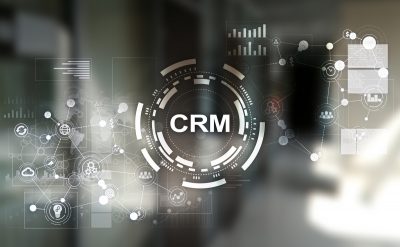The primary goal for any organization is to establish a relationship with the customers. The relationship is based on the mutual understanding of assisting each other goals. Though in modern times things have changed for customers and sellers, a customer has several options while a seller has to compete with all them. Your product might have the best quality or most affordable but if your voice doesn’t reach your customer it’s bound to be a non-profitable prospect. In the 1950s, cities were booming with new people and new prospects to explore. Sales came into existence because the market was flooded with competition. The advent of Rolodex eased out the task for the sales representative that stored contact information. It was more convenient than a notepad; using a Rolodex you could just flip-through cards. This, however, came in with an inconvenience of managing the client data and also the tracking of the sales process. Enter a big invention- the computer that changed the working structure of the people. Computers came in during the 1980s with simple hardware and software that can complete certain functions and store data. During the early 1980s, database marketing was used for sales. It involved manually collecting the data and analyzing the customer information to push customized marketing campaigns for individuals or groups. The statistical model developed by pioneers Robert and Kate Kestnbaum, database marketers used an electronic database for the prospects, customer and all commercial contracts.
By mid-80s, it was becoming increasingly difficult for the data storage in computers that had limitations in memory. In 1986, ACT! A contact and customer management company introduced the first database marketing software. The software was just like a digital Rolodex only that it could store a large volume of data. Robert Shaw, a father of marketing automation along with Robert Kestenbaum went on to develop several database marketing solutions for the BT and Barclays. Shaw incorporated new features like database marketing model that included telephone, field sales channel, contact strategy, and marketing analytics. You can download Whitepapers on CRM, to know more.
The rapid expansion of the digital solutions transformed the relationship between the buyer and seller. Allowing the brands to track their consumer contact points like never before. The process was however still manual and required costly systems & software. In the 1990s as personal computers were being used in every office it became easy for the software developers to find a common ground that can support a large audience. In the 1990s, Customer Relationship Management (CRM) for the first time came into use it was however known as Sales Force Automation or SFA. The SFA automated the feature of database marketing included interaction tracking and inventory control for better customer interaction.
The early innovators included companies like Brock Control System and Unica along with Oracle. However the SFA developer for Oracle, Tom Seibel left the company and formed Siebel Systems. CRM went through a rapid transformation in the 90s with inclusions of sales, marketing and on service application. In 1999, the CRM market was consolidated by some major players due to high-value acquisitions. The end of the century saw the emergence of a first Software-as-a-Service vendor called as Salesforce.
In the 2000s, we saw the shift towards more cloud-based and SaaS-based CRM system that would integrate the array of features. Customers were flooded with seller options and mobile devices practically made the competition tough. Customers were now interacting on social media platforms with various brands. Social Customer Relationship Management became a part of the sales and marketing process. Different software’s were required to manage the contacts and customer relationship this led to many applications coming into the market. The applications reduced the cost of CRM making them more effective for small and medium scale businesses.
Future of CRM Strategy:
The current complexity of the data sources and the technical requirements for sales analytics are the barriers for CRM strategy; Along with skills like social selling, development of sales representative, and mobile device accessibility. Artificial Intelligence and Machine learning would be disrupting the market as new tools are implemented by Microsoft and Salesforce. Currently, the demand from many organizations is a tool that can predict customer response after analyzing the source and response. The process is not about replacing the sales representative but actually making the whole sales process further inclined towards better results.
For more information, you can download whitepapers on CRM.













